Bitcoin’s recent price surge is driven by historically low exchange inflows and aggressive whale accumulation, which reduce available sell-side liquidity and push prices higher; momentum indicators show strength but also warn of short-term volatility that could correct prices toward $116,821.
-
Declining exchange inflows: exchange deposits hit multi-year lows, tightening sell-side supply.
-
Whale accumulation: on-chain data shows large withdrawals from exchanges consistent with long-term holding.
-
Momentum vs. risk: Stochastic RSI at extreme levels signals strong trend with elevated short-term volatility risk.
Meta description: Bitcoin price surge driven by low exchange inflows and whale accumulation; discover near-term targets, risks, and trade signals. Read now.
What is driving Bitcoin’s recent price surge?
Bitcoin price surge is being driven primarily by a sharp decline in exchange inflows and concentrated whale accumulation, which reduce immediate sell-side supply. These on-chain shifts, supported by positive taker-side flows, have pushed BTC toward its all-time high while increasing short-term volatility risk.
How low exchange inflows affect Bitcoin’s liquidity?
Exchange inflows (30DMA) have dropped to multi-year lows, roughly half the 2020 average. Lower inflows mean fewer coins available for quick selling on centralized exchanges, reducing downward pressure and amplifying upward moves when demand increases.
Bitcoin inflow on Binance hits historical lows
CryptoQuant data shows Binance and aggregate exchange inflows fell to historic lows, with 30‑day averages slipping below typical multi-year levels. This pattern contrasts past rebounds when inflows spiked as traders realized profits.
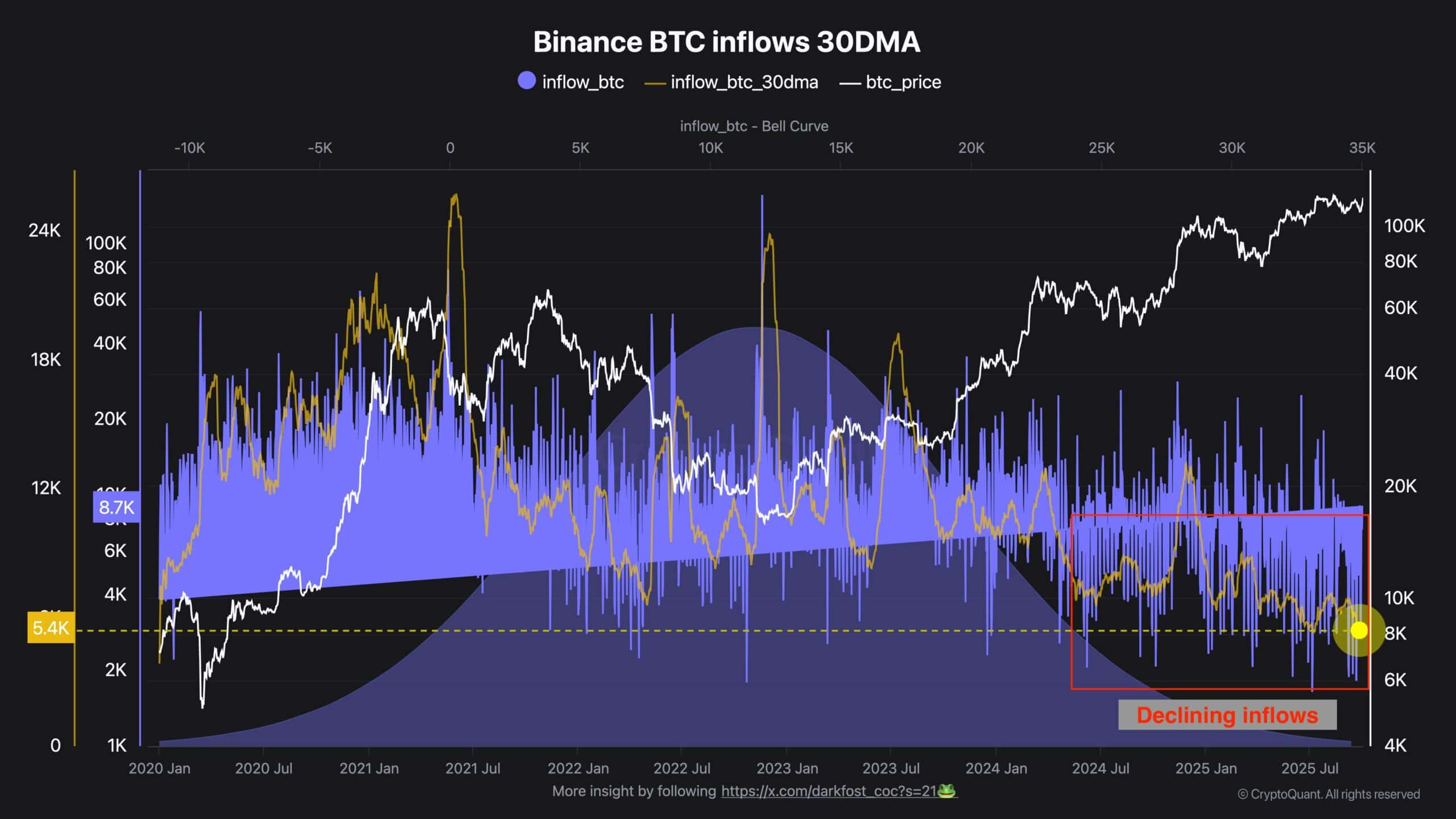
Source: CryptoQuant
Historically, average exchange inflows have been near 11,000 BTC; current readings are roughly half that. The shift indicates more holders choosing self-custody and long-term storage instead of exchange deposits.
Exchange Netflow has recorded sustained negative values, with a monthly low near -26k BTC on October 3, indicating net withdrawals from exchanges.
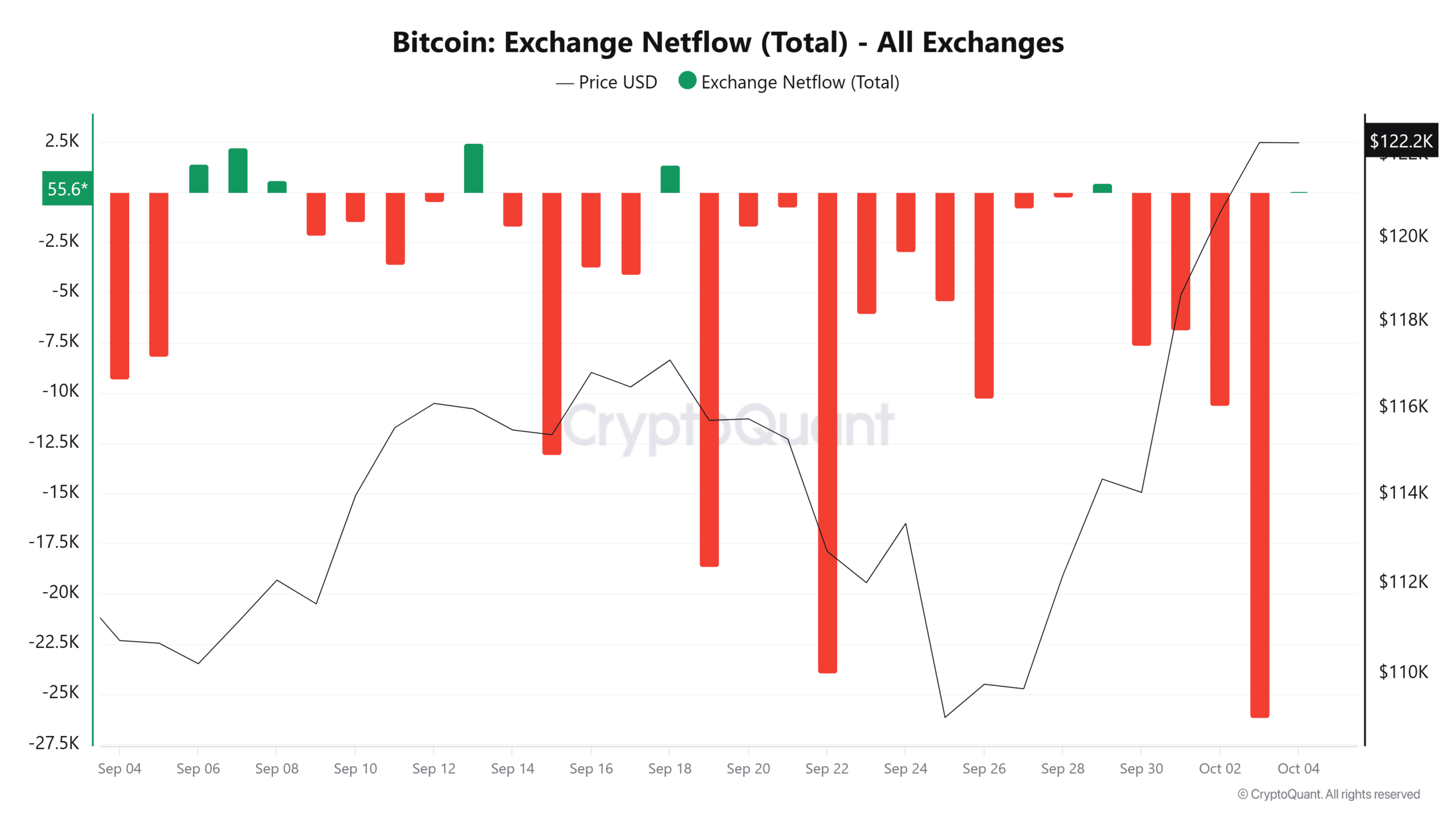
Source: CryptoQuant
Buyers dominate the market
Spot market taker CVD readings turned positive for consecutive days, indicating buyers are aggressively taking liquidity. When takers buy on exchanges, they often withdraw assets to private wallets—supporting the decline in exchange balances.
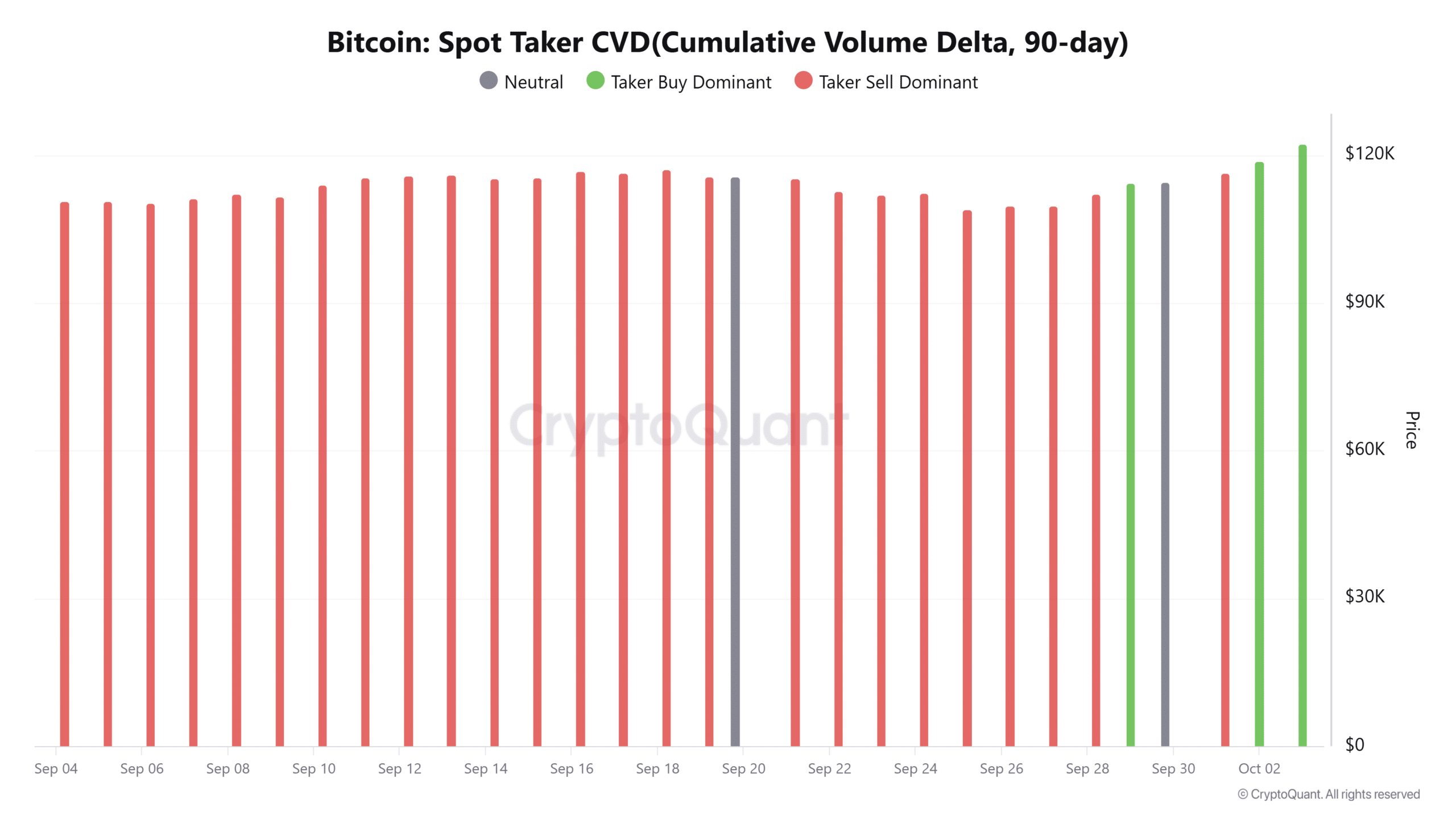
Source: CryptoQuant
Who is buying?
On-chain exchange balance metrics show large-scale withdrawals by whales. Checkonchain data indicates MegaWhales Exchange Balance Change registered a sharp drop, consistent with tens of thousands of BTC moving off exchanges and into custody wallets.
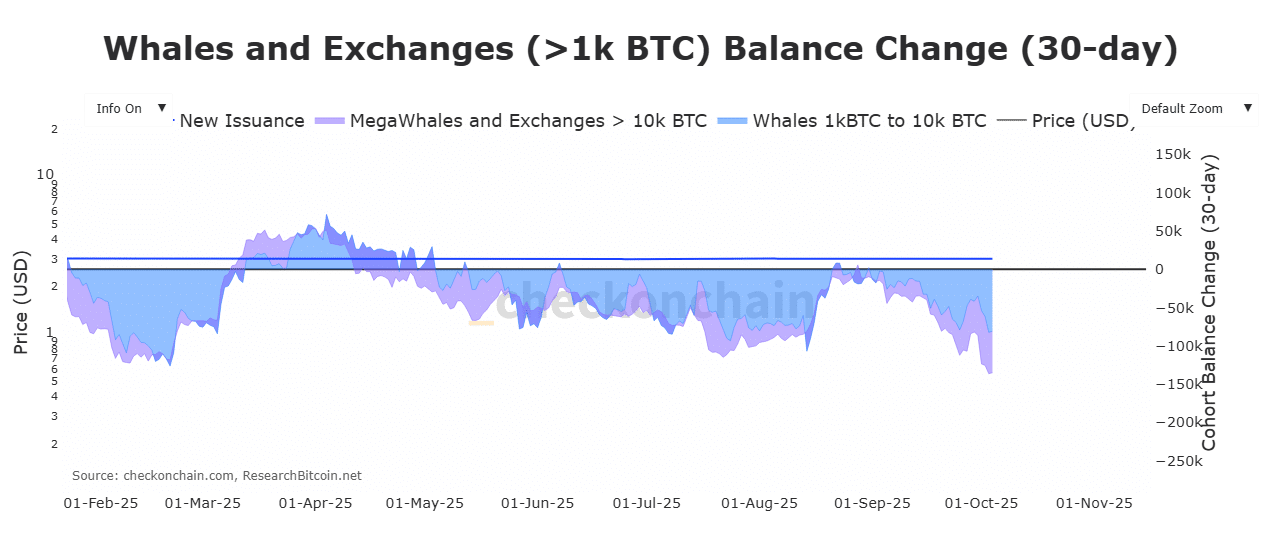
Source: Checkonchain
Whale-driven withdrawals imply accumulation rather than distribution. Historically, prolonged whale accumulation has preceded extended bullish runs for BTC.
Is a new ATH within reach for BTC?
Reduced exchange selling and concentrated accumulation have pushed BTC close to its all-time high. Momentum indicators—Stochastic RSI and DMI—show strong trend strength but also overbought readings that increase the chance of short-term corrections.
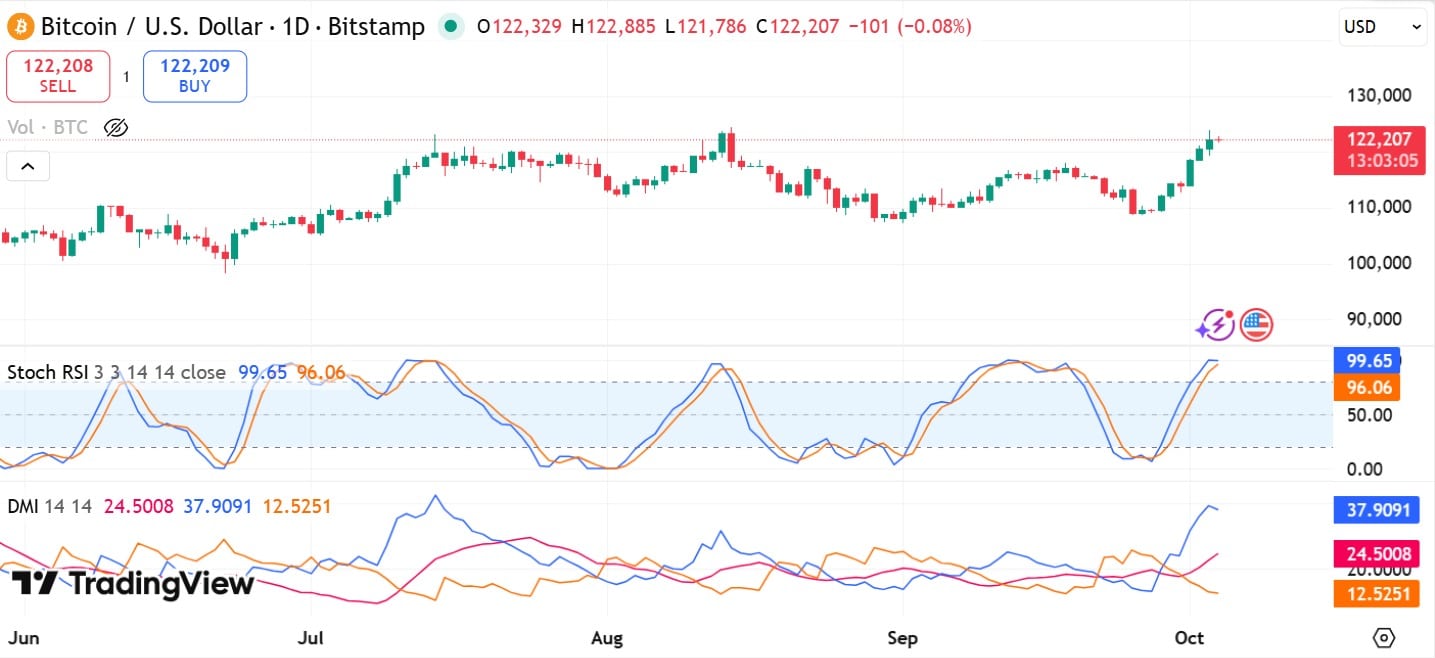
Source: TradingView
If inflows remain low and whales continue accumulation, BTC is likely to test $123,700 and its ATH near $124,517, with upside possible beyond that level. Conversely, overbought conditions could cause buyer exhaustion and a corrective move toward $116,821.
Frequently Asked Questions
How do exchange inflows signal market direction?
Exchange inflows measure coins deposited to exchanges; sustained declines reduce immediate selling supply and often precede price appreciation if demand remains steady.
What does whale accumulation mean for retail traders?
Whale accumulation typically reduces available supply and can create powerful upward pressure; retail traders should monitor on-chain balance shifts and risk-manage around momentum indicators.
Are momentum indicators reliable at extremes?
Momentum indicators like Stochastic RSI can confirm trend strength but often signal short-term exhaustion when extreme; use them with liquidity and flow data for context.
Key Takeaways
- Supply squeeze: Exchange inflows are at multi-year lows, tightening sell-side liquidity.
- Concentrated demand: Whales are withdrawing and accumulating BTC off exchanges, supporting price.
- Manage risk: Extreme momentum readings increase short-term volatility risk; maintain stop management.
Conclusion
Bitcoin’s recent rally is rooted in reduced exchange inflows and significant whale accumulation, creating a supply-constrained environment that supports higher prices. Momentum indicators suggest both continuation potential and elevated volatility risk; traders should combine on-chain flow metrics with technical signals for informed decisions. Publication: COINOTAG — updated 2025-10-05.
